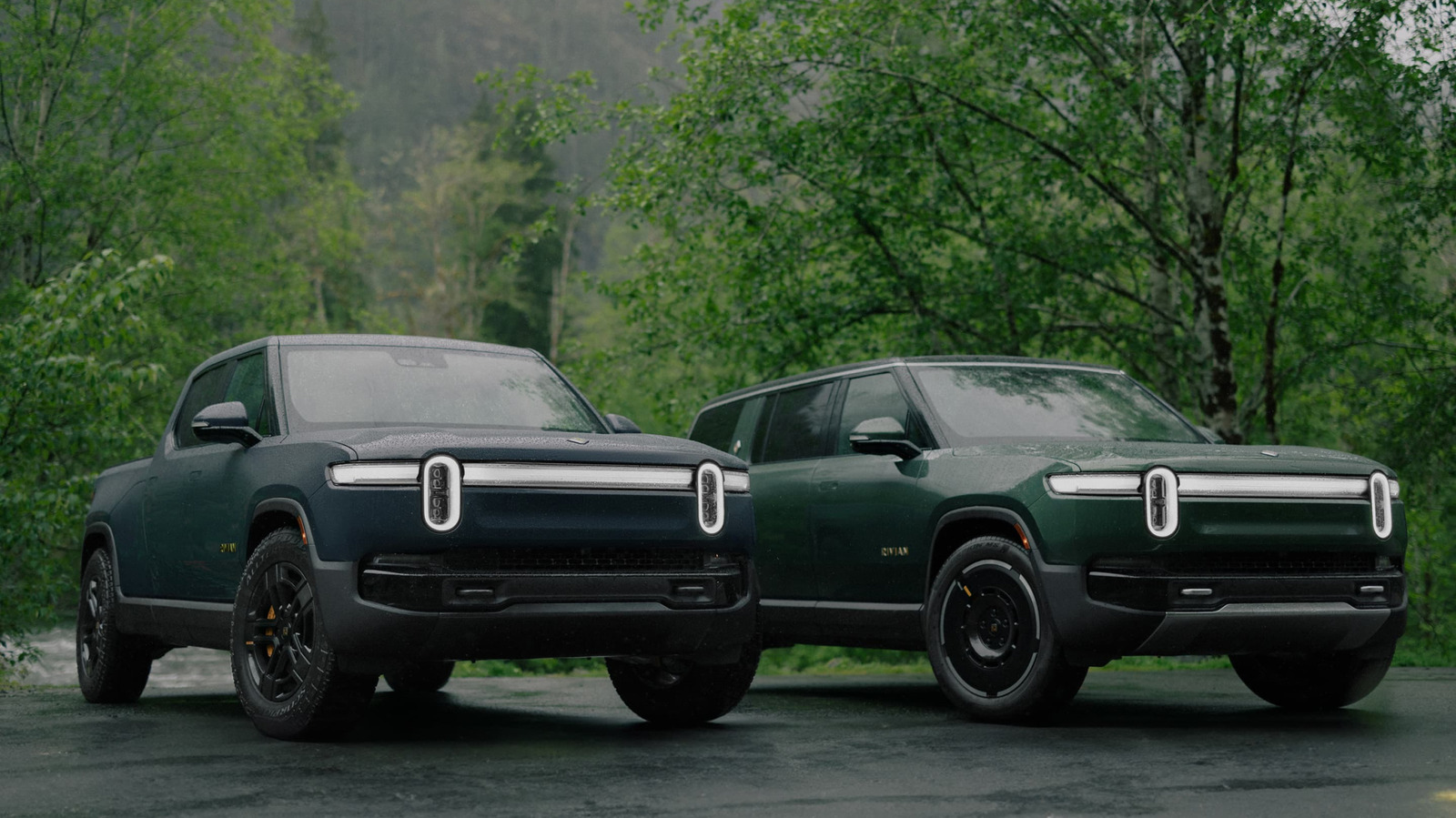The Rivian R1T (the pickup truck version) and the Rivian R1S (the SUV version) are electric vehicles that are built on a common platform. Rivian recently unveiled its second-generation R1 EVs, which may look identical to the originals but have been extensively reworked underneath their skins.
Advertisement
Rivian EVs are powered by various combinations of at least two and as many as four electric motors that are located in the front and the rear of the vehicles, making every Rivian an all-wheel drive vehicle. These are known as the Dual-Motor, Tri-Motor (new for the second generation), and Quad-Motor configurations. Instead of buying their Quad-Motors from Bosch, as they did for the first generation, all the motors that power the current generation of Rivians are completely designed, engineered, and manufactured by Rivian staff.
The entry-level Dual-Motor R1, with an engine in front and one in the rear, comes with a power rating of 665 horsepower. This is enough to generate a zero-to-60 mph time of 3.4 seconds in the Performance model. The Tri-Motor R1 puts two engines in the rear and one in the front, upgrading the power output to 850 horsepower. This brings the zero-to-60 mph time down to 2.9 seconds in the Tri-Motor R1T. Finally, the Quad-Motor R1 ups the ante to an awe-inspiring 1,025 horsepower, which when used with the Rivian’s Launch Mode, produces a zero-to-60 mph time of 2.5 seconds and a quarter-mile time of 10.5 seconds.
Advertisement
What about the batteries that power the motors of the R1T and R1S?
The battery packs that provide the power for the second-generation R1’s motors have also been changed, as battery technology has moved forward and become more efficient. The Standard battery pack now uses lithium iron phosphate (LFP) chemistry, which is a less expensive option compared to the lithium-ion batteries that Rivian makes available in its Large and Max battery packs. The Large and Max lithium-ion battery packs will continue to use 2170 cylindrical cells, but now incorporate larger, lighter-weight, and easier to assemble high-pressure die castings into the pack enclosure.
Advertisement
The base price of the Rivian R1 vehicles, which are made in Normal, Illinois, is $69,900 for the R1T and the $75,900 for the R1S. While the standard LFP battery is included in the base price of the Dual-Motor Rivian R1T and R1S, you can upgrade to the Large lithium-ion battery pack on the Dual-Motor for a $7,000 upcharge. Stepping up to the Max battery with the Dual-Motor setup will add $14,000 compared to the LFP option, or another $7,000 on top of the Large battery. Moving up to the Tri-Motor with the Max battery will increase the cost of your Rivian by $30,000 above the base price.
The Quad-Motor Rivian R1 vehicles have not yet been released and are estimated to go on sale in early 2025. Based on a September 2024 magazine test of a Quad-Motor R1S with the Max battery, the price of the 4-motor upgrade with the largest battery will be around $40,000.
Advertisement
How much range does a Rivian R1T or R1S have?
The range provided by a Rivian, as with any EV, will depend on the battery pack selected as well as the number of motors built into the vehicle. The Rivian’s base LFP battery pack provides 258 miles of range with the Dual-Motor setup on both R1T and R1S, according to the EPA. Rivian has provided estimates for some of the other configurations. With the Large battery pack, Rivian estimates a 330-mile range for both vehicles. Moving up to the Max battery pack with the Dual-Motor, Rivian has estimated 420 miles for the R1T and 410 miles for the R1S.
Advertisement
Then there’s the Tri-Motor and the Max battery pack, for which Rivian quotes a 371-mile range. The Quad-Motor Rivians are performance vehicles first and foremost, which shows in their real-world range, checked during the R1S magazine test noted above, of 274 miles. Rivian’s estimate? Up to 355 miles. Your mileage may vary…







